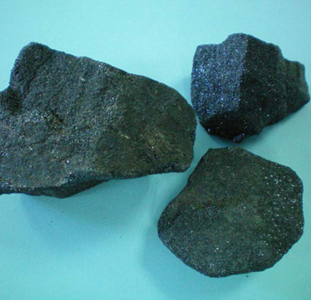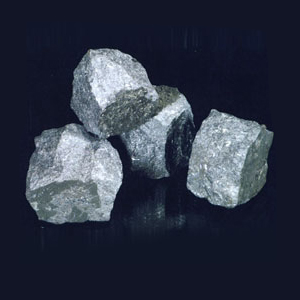【Ferro-alloys.com】: Flying deep into the heart of Western Australia, Rio Tinto Group executives, politicians and media step off a chartered jet into a Pilbara airport, little more than a sunbaked shed with metal detectors. Cameras roll. Smiles flash. They are here for the unveiling of Rio’s Western Range, a new open-cut mine designed to pump out 25-million tons of iron ore a year.
But behind the fanfare, a harsher truth looms: Western Range isn’t about growth. It’s about keeping the machine running.
In the Pilbara — home to the world’s largest iron-ore output — Rio Tinto is swapping out old deposits for new just to maintain current production. The powerhouse sector that helped Australia sidestep the 2008 global financial crisis, churned out billionaires, and fed China’s skyline ambitions is no longer booming — it’s plateauing. Less than two months after the ribbon was cut at Western Range, a more muted signal followed. On Wednesday, Rio Tinto reported its lowest first-half profits in five years after iron-ore prices slumped. The result wasn’t a collapse, but a reminder that the cracks are widening — and the boom years are getting harder to hang onto.
The steelmaking material that underpinned Australia’s economic rise is losing its edge: ore quality is falling, margins are tightening, and the vast deposits that built decades of prosperity are slowly being exhausted. None of this will be swift, but the once-reliable resource may not be able to pull Australia through the next financial calamity. And there’s not much of a fallback plan.
The Pilbara — bigger than California — has fueled the global iron-ore trade since the first shipment set sail for Japan nearly six decades ago. Warnings of an impending slowdown have surfaced before, only for the industry to prove its resilience time and again. But this time, the headwinds are stronger and mining giants are pouring billions into what comes next, as the foundations of the industry begin to shift.
“It’s a very significant risk that sits across the Pilbara,” said Greg Lilleyman, a veteran mining executive who served as Fortescue ’s chief operating officer and spent 26 years at Rio Tinto.
“Customers want higher quality iron-ore, lower emissions per ton of steel, higher productivity from smaller footprints.”
The lack of any clear successor to iron-ore’s economic heft is leaving a hole that Australia is unsure how to fill. As the Pilbara’s dominance starts to wane, broader pressures are mounting: the re-elected Labor government is rallying top business leaders to tackle stagnant productivity with a budget stuck in deficit. The so-called Lucky Country is being forced to confront the original irony of its nickname: a nation long-cushioned by resource windfalls, now facing the cost of prolonged complacency.
As China’s hunger for Australian iron-ore peaks, Canberra forecasts prices dropping to $74 a ton by 2027, around 40% below the average price over the past five years. That spells trouble for the federal budget, with revenue from the sector expected to drop by more than A$19-billion ($12.2-billion) in the next two years alone. Furthermore, production volumes are expected to peak within three years.
It’s a sharp reversal for a sector that Westpac Banking estimates drove more than half of the nation’s living standards gains in the first two decades of the century. Without major productivity reform, the bank warns the end of the “mining dividend” could cost each Australian A$75 000 in lost income over the next decade, senior economist Pat Bustamante said in a July report.
Not everyone is publicly acknowledging the scale of the challenge.
“Iron-ore is the bedrock of Australians’ prosperity and the thread which binds us to the global economy,” Madeleine King, Australia’s minister for resources, told reporters at the Western Range mine opening in June. The “project is further proof that Australia’s iron ore sector is the best and most stable in the world.”
Iron-ore still makes up more than 4% of Australia’s economy and has long been the backbone of state and federal budgets. But keeping up production and funding exploration is getting harder and more expensive as ore quality declines. At the same time, steelmakers are under pressure to cut emissions, accelerating a pivot toward higher-grade ores that produce less carbon - much of it now coming from new mining hubs outside Australia.
In West Africa, Guinea’s long-delayed Simandou project, backed by Rio Tinto and Chinese state-linked investors, is finally nearing production, with its first shipment expected by year’s end. Home to some of the world’s highest-grade untapped iron-ore reserves, Simandou spans over 100 km and is projected to produce more than 100-million tons annually at full tilt.
Australian media has dubbed Simandou the “Pilbara killer” — an overstatement, but one that underscores the stakes. Its development reflects Beijing’s long-term ambition: to break its dependence on Australian ore and gain greater control over a key input to its steel industry. Chinese state-owned companies are increasingly partnering with global miners, including China Baowu Steel Group, which owns 46% of Western Range.
“We are not just unveiling a new operation, we are celebrating the next chapter” in the Baowu partnership, Jakob Stausholm, outgoing CEO of Rio Tinto, said at the mine’s opening, speaking just meters from a building-sized driverless truck dumping piles of ore into a crusher.
The speeches were intended to emphasize strength and continuity: ore from the new pit was being piled onto an 18-kilometer conveyor belt that would roll all the way to Rio Tinto’s existing Paraburdoo plant. But the plant has now been processing material for half a century — as China diversifies supply and demands cleaner ore, the Pilbara is starting to show its age.
For much of this century, iron ore fines with 62% metal from the Pilbara have set the global standard — it’s the grade that’s priced, traded, and shipped around the world. But that benchmark is now under pressure. As the quality of the material slips into decline, pricing agency Platts is planning to drop the benchmark to 61% from next year — a small shift that signals a bigger challenge to Australia’s dominance.
High-grade ore is crucial as the world shifts from coal-heavy blast furnaces to cleaner electric-arc technology to cut emissions. Australia wants to lead the green steel race — Prime Minister Anthony Albanese underscored iron-ore’s role in decarbonization during his visit to Shanghai last month — but most Pilbara deposits fall short of the 67% purity typically required, stuck between 56-62%. Closing that gap will demand investing billions in renewables, hydrogen, and processing — no small task amid weak productivity and tight finances.
“What got us to this point won’t get us where we need to go,” Tim Day, head of Western Australia iron ore operations at BHP Group Ltd., said at a June industry event in the Pilbara. “We are playing in a global game, where the rules are changing radically as we speak.”
Australia’s mining giants, including global leader BHP, still boast some of the lowest production costs in the world, with hefty margins. But the fundamentals are shifting. Future output may rise in volume, but not in value. It’s an even bigger concern given that this revenue stream is expected to bankroll the transition to clean energy, the only long-term strategic bet the mining majors are currently making.
With rich deposits of lithium and rare earths, Pilbara miners that built their fortunes on red dirt iron are now redeploying capital into projects aimed at powering the energy transition and meeting soaring demand from data centers and tech industries. But earnings from these ventures remain a fraction of iron ore profits, and the investment risks remain significant.
After more than a decade on the sidelines, Rio Tinto is back in dealmaking mode, betting big on the future of battery metals. Its $6.7-billion acquisition of Arcadium Lithium last year positioned the miner for a bigger role in the global lithium supply chain. The timing, however, isn’t ideal - prices remain mired in a downturn, and Rio is currently revising the cost of its Jadar lithium project in Serbia.
BHP has also turned to strategic dealmaking to reshape its future. The world’s biggest miner launched a bold $49 billion takeover bid for Anglo American Plc last year, driven largely by a desire to secure more copper, a metal critical to the global electrification push. While the bid ultimately failed, it signaled BHP’s intent to pivot more aggressively toward alternative growth-drivers.
Despite the growing momentum behind battery metals, China remains firmly in control of the supply chain and is likely to for years to come. Lithium, copper, rare earths and other key inputs to the energy transition currently generate only a fraction of the revenue that iron-ore has delivered for decades. Annual iron-ore exports were estimated at A$116-billion in latest government data, compared with A$13-billion for copper shipments and A$4.6-billion for lithium.
“Critical minerals are important to Australia’s economy, diversified commodity portfolio and Net Zero plan ambitions, but are not a viable alternative for iron-ore,” said Caroline Tiddy, a geologist and associate professor at the University of South Australia.
Fortescue founder and billionaire Andrew Forrest is one of the industry’s loudest advocates for green technology, and has warned the Pilbara risks becoming a “wasteland” if Australia fails to adapt to shifting global demand. Rio Tinto’s incoming CEO Simon Trott, currently head of its iron-ore division, remains more sanguine, arguing the region will anchor the economy for generations.
The truth likely lies somewhere in between.
Meanwhile, external threats to the Pilbara keep mounting. Beyond the challenge of replacing iron ore and coping with declining grades, US President Donald Trump’s tariffs are already threatening broader global demand. Rivals like Brazil’s Vale SA are ramping up output and supplying higher-grade ore, intensifying competitive pressure.
Simon Trott has his work cut out. As he prepares to take the helm of the world’s top iron ore exporter on Aug. 25, he struck a confident tone just days before opening the new Western Range mine.
“Iron-ore in the Pilbara will be continuing long after I’m gone — and long after my children’s children have gone,” Trott said in an interview. “The Pilbara will last for many decades to come.”
- [Editor:Alakay]



 Save
Save Print
Print Daily News
Daily News Research
Research Magazine
Magazine Company Database
Company Database Customized Database
Customized Database Conferences
Conferences Advertisement
Advertisement Trade
Trade

















Tell Us What You Think